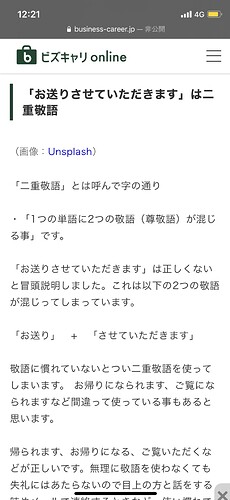Your poor mom!
In these cases, I recommend using the “report” button on the review page! You can explain to the devs what alternate answer(s) might be possible and could/should be accounted for by the program 
Has anyone mentioned のみ yet? だけ is accounted for, but not のみ.
I believe that there is no grammar point for 「しかし」
If I understand it well it’s a more common and shorter version of 「しかしながら」(https://bunpro.jp/grammar_points/674) but this one is in the JLPT1 course while 「しかし」 is listed as JLPT5 on https://jlptsensei.com/learn-japanese-grammar/しかし-shikashi-meaning/
JLPT1 is a long run away from the JLPT5, so maybe it would be a good idea to add it as another point in JLPT5.
References I could find on this grammar point:
- https://jlptsensei.com/learn-japanese-grammar/しかし-shikashi-meaning/
- 【だが】と【しかし】と【でも】の意味の違いと使い方の例文 | 例文買取センター
- https://hinative.com/ja/questions/6606758
- BUT in Japanese - でも vs けど vs が vs のに vs しかし┃the Native Way - YouTube [Japanese Ammo with Misa]
Edit: Now that I think about it, there is no grammar point for でも either, as in, used at the beginning of the sentence to mean “but”. Is it because it’s considered as a vocabulary point instead of a grammar one ?
I haven’t tried the answer input that you suggested, but are you sure that it wasn’t rejected because you wrote 送りさせていただく、instead of 送らせていただく?
Ooft, I can’t remember. Seemingly お送りさせていただく is often used but not actually correct keigo. I might have written that.
A lot of Japanese people make mistakes with keigo even, so I wouldn’t sweat it. I looked it up last night in Japanese and couldn’t find a 100% definitive answer anywhere. For me, something just sounds off about お送りさせていただく. I’ll ask my partner later today, she may know.
お送りさせていただくって言うのは、間違いだってはるなが言った。理由は、2つの敬語があるから。これを読んで表れます。
It’s double keigo, and although lots of people use it, apparently it is considered wrong. Almost similar to how lots of English native speakers say things like
‘I don’t like ___ neither’ etc.
Wrong, but so often said that some consider it right.
Just read through a few of the business emails my wife is working through at work, it is literally, without exception, always お送りさせて頂く.
I’m in 2 minds about what to think about this. On the one hand, it is so pervasive that its practically not even considered a mistake in business Japanese, however on the other hand it actually is wrong so should be avoided. What chance do learners have??
Like you said, it is wrong, so my suggestion would be to have it as a potential ‘right’ answer, but with the stipulation that it is wrong (in the orange text)
Also keep in mind that in higher level business situations, people get in trouble for misusing keigo quite often (well… Not in trouble, but left feeling embarassed). I had a client a few days ago that told me that he had to apologize to his subordinate, because he accused him of making a keigo error in his report, but when he showed a higher level boss, that guy said that the subordinate was actually correct. So in the end, my client tried to call out another persons error, and ended up getting schooled in keigo himself. Hahah.
I have another grammar point to add that I couldn’t find: using んだ as a rough command. Examples: 聞くんだ (you should listen) 逃げるんだ (you should run away). It’s used quite often in anime, but not many sites or textbooks teach it.
やめるんだバイキンマン!
(sorry)
And here’s another bunch of grammar points from me.
- 多少なりとも
- とは (I think this needs to be a separate grammar point because it is used as a consistent separate construction)
- ~たりして (as an ending for sentences)
- ~ぞう (everyone knows this, but what does it actually mean? you can encounter it not just in anime, but even teachers use this at school as I found out)
- ~できて (sentence ending)
- ~にされると~
- より~ “more/even more” adverb (e.g. “より虚しい…”)
- 次第に (you have 次第で, but it is a completely different grammar point)
- 訳あって~
Yeah, no matter how much you add there’s still plenty left 
PS - first post is also updated.
TIL I’m no one 
I take it we’re not talking about the sentence final ぞ. Where do you see this?
Likewise, never seen this before.
That’s not ぞう though
強 and 弱 can be used to say just over or just under a given number, so 100弱 is “just under 100”. It can be used for times as well like “just under an hour” - “1時間弱”
行くぞ~!
A grammar point I ran into the other day which I couldn’t find here is using the continuative form of a verb followed by a 、.
Edit: Here’s a page on imabi that explains it. https://www.imabi.net/renyouchuushikei.htm

